by François Lique & Amélie Godard Palluet & Cheikh Bop & Guillaume Raffy & Marie Gueguen & Michał Żółtowski & Paul Pirlot Jankowiak & Rafael Jara Toro & Sándor Demes & Alexandre Faure, on
Presentation of the workshop
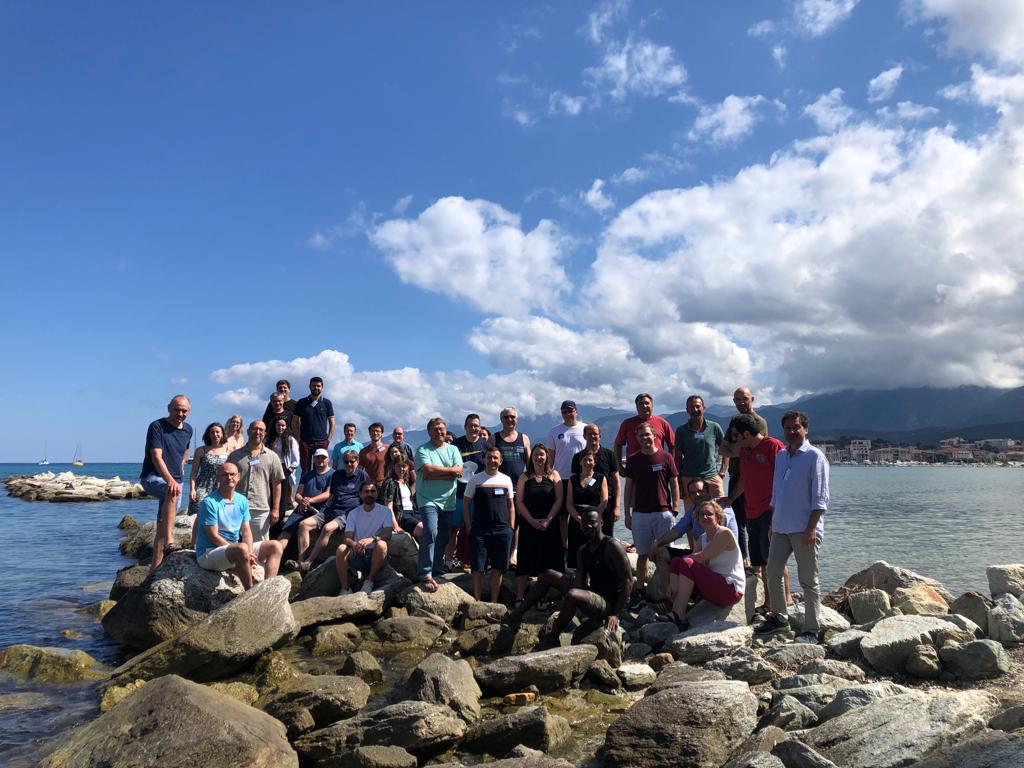
From the 12th to the 15th of June 2023, the workshop on Physical and Chemical processes of astrophysical interest was taking place in Saint-Florent (Corsica). It was organized by F. Lique, J. Loreau and A. Faure.
This meeting was the opportunity for astronomers, theoreticians and experimentalists to address the current challenges in the search for new species and in the development of accurate chemical models able to reproduce the observations and predict new discoveries.
During this workshop, M. Gueguen, S. Demes, G. Raffy, P. Pirlot Jankowiak, A. Godard Palluet and M. Żółtowski from the COLLEXISM team presented their work.
Centre d'Études Sous Marines (CESM) - St Florent, Corsica
The CESM is an associative sailing and diving club created in 1949.
This non-profit organization is offering sailing and diving activities to vacationers for over 60 years.
Since 2011, the center lends its premises to workshops about physical and chemical processes in the interstellar medium organised by François Lique.
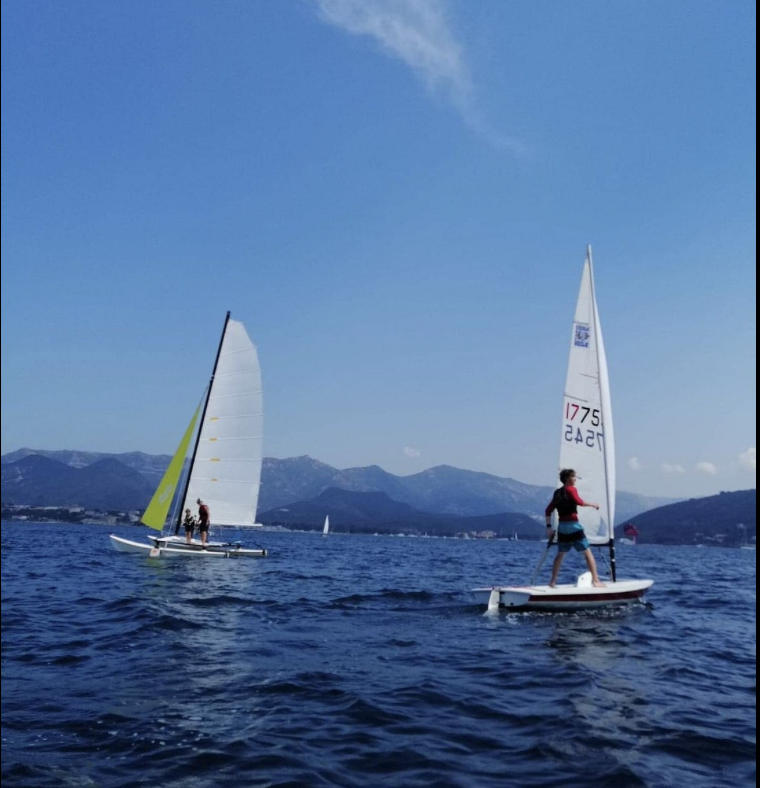
Collisional excitation of radical molecules in the interstellar medium - P. Pirlot Jankowiak , and F. Lique

The modeling and interpretation of molecular spectra from interstellar environments require the knowledge of both radiative and collisional processes of energy transfer between chemical species. Accurate state-to-state rate coefficients of interstellar molecules in collision with the main collisional partners H2, H and He are then necessary.
Such collisional data can be obtained through quantum time-independant scattering calculations by resolving the close-coupled equations. This method is nowadays one of the most accurate for describing collisions at very low temperature. However, species such as radicals possess very complex energetic structures because of the presence of non zero electronic and even nuclear spins. Also, accurate description of fine and hyperfine transitions implying two interacting molecules is a true theoretical challenge. Then, this method is not fully applicable in terms of memory and CPU time.
This thesis work consists in quantifying the collisional excitation of these open-shell molecules in astrophysical media. The development of methodological and numerical tools are then required to overcome these problems and to characterize physical and chemical processes as precisely as possible. The provided collisional data are expected to interpret observations and corroborate experiments performed in laboratory.
Hyperfine resolved rate coefficients of HCNH+/H13CNH+ induced by collision with He and H2: towards HCNH+ abundance modeling and H13CNH+ line intensity prediction - C. Bop, M. Agúndez, and F. Lique
The simplest protonated nitrile, HCNH+, was discovered in space for the first time towards Sagittarius in 1986. Since then, this cation has been observed in numerous star forming regions in different evolutionary stages.
The protonated-to-neutral abundance ratio is sensitive to the ionization rate and thus to the physical conditions of the astronomical environment. Accordingly, constraining this ratio is crucial to better
understand the chemistry of HCNH+ and the physical conditions of the media where it has been detected. Nevertheless, chemical models still fail at accurately re-producing the protonated-to-neutral abundance ratio.
These disagreements are usually thought to be originated from missing chemical reactions but they can also originate from the simple approaches (Local Thermodynamical Equilibrium (LTE) or rotational diagram) used to model the observational spectra of HCNH+. To address this issue, we use non-LTE radiative transfer calculations to re-interpret the HCNH+ observational spectra. We also predict the line intensity of H13CNH+ which is still missing whereas the 13C-isotopologues of all molecules that contribute in the chemistry of HCNH+ have been already detected.
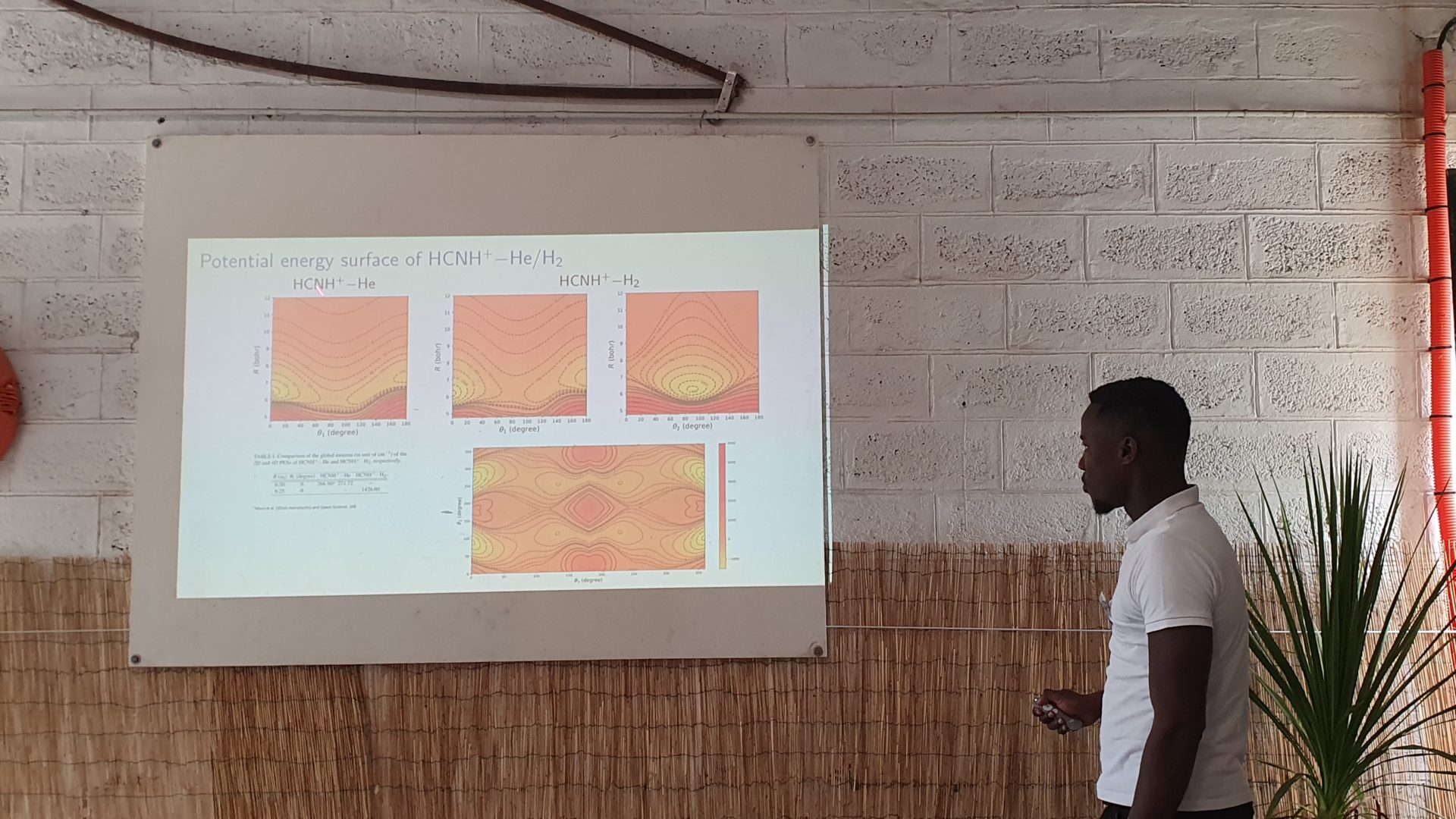
Collisional excitation of HCN and HCN by water in comets - M. Żółtowski, D. Kędziera, J. Kłos, P. Żuchowski, J. Loreau, M. Cordiner and F. Lique
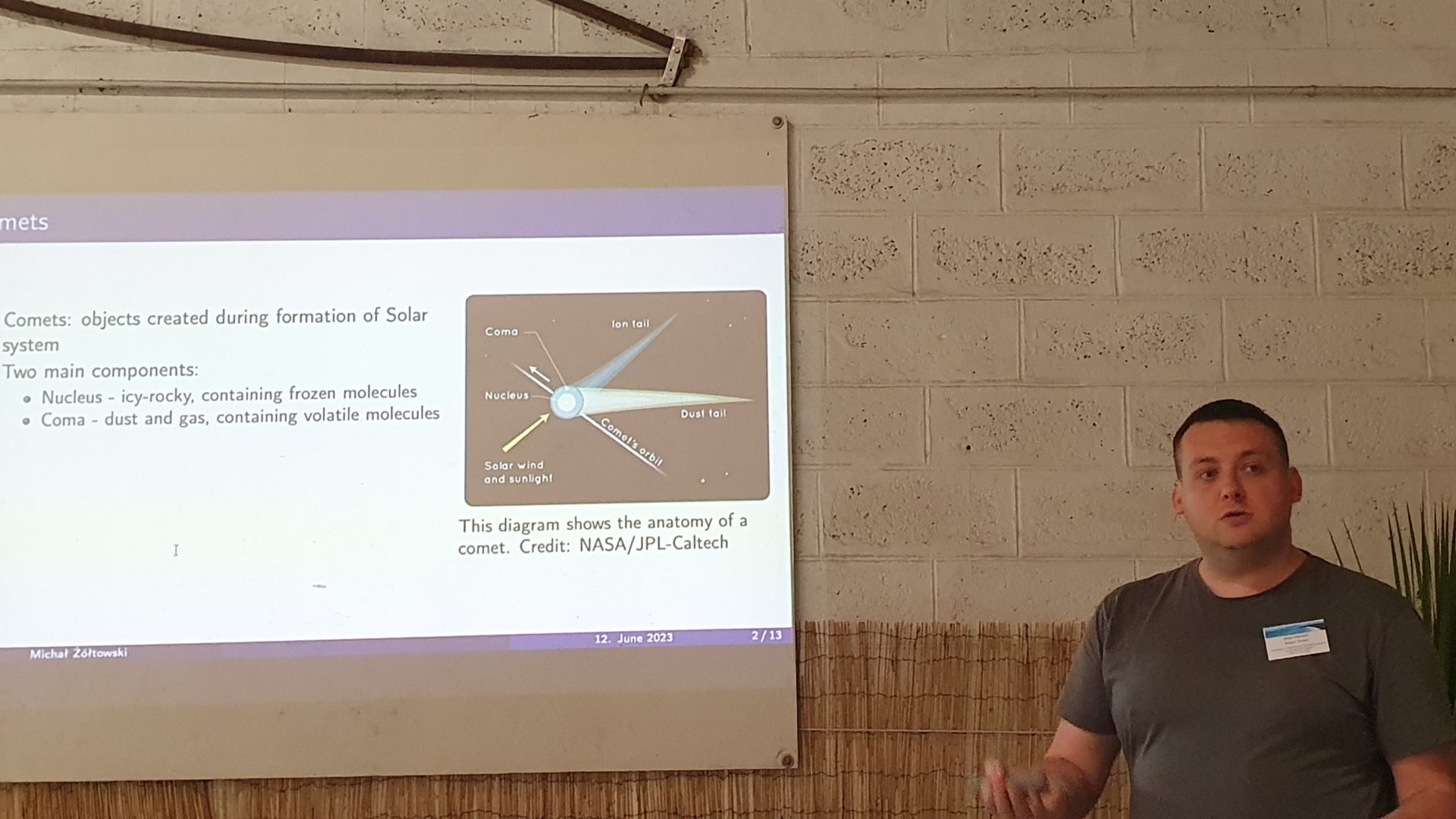
The HCN and HNC are one of the often observed molecules in the cometary atmosphere. Both of these molecules were observed in comets at small heliocentric distances (< 3 AU), where water production dominates. Thus, it is natural that their excitation is partially due to collisions with water molecules. Although it is generally accepted that the appearance of HCN in the coma is due to sublimation from the nuclei, it is not so evident for HNC. It is assumed that HNC can also be sublimated from the nuclei as HCN, or it can be created due to the proton reaction exchange of HCN. However, there was also a discussion that HNC can be simply a product of bigger organic molecules dissociation. Therefore, an accurate interpretation of the spectra may help solve this puzzle.
New potential energy surfaces of HCN/HNC - H2O systems were calculated using the autoPES code, within symmetry adapted perturbed theory with the density function theory (SAPT(DFT)) description of monomers. Potential were introduced to the new version of Hibridon 5 scattering code. For both systems pure quantum calculation were not be feasible. The alternative method - statistical adiabatic channel model were used, to obtain collisional rate coefficients. Preliminary results of HCN - para-H2O shown, that propensity rules and magnitude of the rate coefficients of HCN - para-H2O are similar to the HCN - ortho-H2O
References
1. Agúndez, M., Biver, N., Santos-Sanz, P., Bockelée-Morvan, D., and Moreno, R., A&A, 564, L2, 2014.
2. S. D. Rodgers and S. B. Charnley, ApJ, vol. 501, no. 2, p. L227, jun 1998.
3. D. C. Lis, D. Bockelée-Morvan, J. Boissier, J. Crovisier, N. Biver, and S. B. Charnley, ApJ, 675, no. 1, 931, 2008.
4. S. D. Rodgers and S. B. Charnley, MNRAS, 323, no. 1, 84–92, 2001.
5. M. P. Metz and K. Szalewicz, J. Chem. Phys, 152, no. 13, 134111, 2020.
6. M.H. Alexander, P.J. Dagdigian, H.-J. Werner, J. Kłos, B. Desrousseaux, G. Raffy, F. Lique, Computer Physics Communications,289, 108761, 2023.
On the reactivity at low temperatures. Studying the C3N + X (X = H2 and CH4) and H + CH+ reactions as a test of concept - R. Jara Toro, and F. Lique
After the discoveries of several molecules in interstellar medium (to date, about 300 species have been identified),[1,2] understand how the chemical processes occur to produce it under such extreme conditions (low-temperatures and densities) become in an important goal for chemists. The importance not only of ion–neutral reactions but also of neutral–neutral reactions was recognized in this environment, and for this reason there is a great effort to obtain information about the rate coefficients of the gas-phase reactions from laboratory experiments and/or estimate it based on theoretical calculations. These results let us to interpret the observational data, explain the observed abundances and understand the origin and fate of these molecules in the interstellar medium, which is a good reason to create databases as KIDA [3] that can simplify the search of important parameters for the chemistry of astrophysical environments.
However, it is known that some values could be inappropriate or not good enough to be used, for what we employ a simple methodology to calculate accurate rate coefficients in a wide range of temperatures. In this presentation is shown the calculated rate coefficients for the C3N + X (X = H2 and CH4) and H + CH+ reactions, and the comparison with the experimental [4,5] and KIDA results.
References
1. M. Guélin and J. Cernicharo, Front. Astron. Space Sci., 9, (2022)
2. E. Herbst and E. F. van Dishoeck, Annu. Rev. Astron. Astrophys., 47, (2009)
3. V. Wakelam et al, ApJ. 217, 20, (2015)
4. M. Fournier, Ph.D. Thesis, Université de Rennes, France, (2014)
5. R. Plasil et al., ApJ., 737, 60, (2011)

Fine and hyperfine excitation of CCS isotopologues induced by collisions with He - A. Godard Palluet, and F. Lique

Molecular spectra often serve as the sole source of information about astrophysical media. To interpret these spectra, collisional rate coefficients are essentials. The CCS molecule has been detected in several molecular clouds, protostellar envelopes, and the circumstellar envelope of IRC+10216. Despite its abundance in these media, no reliable rate coefficients exist for this molecule yet. This is due to its complex fine structure, which complicates the computation of data. Additionally, various isotopologues of CCS, such as 13CCS, C13CS, CC34S, and recently CC33S, have been detected in molecular clouds. Having collisional data for all these isotopologues will aid in discussing isotopic fractionation in these media and understanding the formation mechanism of CCS through the analysis of the 13CCS and C13CS abundance ratio. Nevertheless, 13C and 33S isotopologues have non-zero molecular spin, resulting in the splitting of fine structure levels into 2 hyperfine levels for 13C-based isotopologues and 4 hyperfine levels for the CC33S isotopologue.
In this study, we present the first CCS-He potential energy surface computed with CCSD(T)/aVQZ and mid-bond functions level of theory, as well as the first accurate CCS-He rate coefficients. These were compared to previously computed values, showing a global agreement within a factor of 2-10, and up to a factor of 100. The derived abundances in TMC-1 differed by 20% and were 2.5 times lower than CCS abundance from the ISA (https://isa.astrochem-tools.org/) database.
Furthermore, we computed fine and hyperfine rate coefficients for 13CCS, C13CS, CC34S, and CC33S isotopologues. The isotopic effect on rate coefficients was found to be relatively weak, with differences in line intensity of 13C-based isotopologues primarily induced by a factor of 2.5 difference in abundances (not 4.2 as suggested by Sakai et al., 2007), rather than by collisional effects. Therefore, the formation of CCS cannot be induced by a symmetric molecule.
In this study, accurate rate coefficients were computed for 5 CCS isotopologues, allowing us to revise the CCS abundance in TMC-1, derive 13CCS, C13CS, CC34S, and CC33S accurate abundances, and provide insight into the CCS formation pathway.
Hibridon: what's up ? - M. H. Alexander, P. J. Dagdigian, H.-J. Werner, J. Kłos, B. Desrousseaux, G. Raffy, F. Lique
All the updates and improvements present in the new 5th version of the HIBRIDON software are presented.
Hibridon is a program package to solve the close-coupled equations which occur in the time independent quantum treatment of inelastic atomic and molecular collisions. Gas-phase scattering, photodissociation, collisions of atoms and/or molecules with flat surfaces, and bound states of weakly-bound complexes can be treated. From calculation of the S matrix, integral and differential cross sections, stereodynamic (alignment and steric asymmetry) cross sections, as well as more specialized quantities, such as transport and tensor cross sections, and cross sections between hyperfine levels, and photodissociation amplitudes can be obtained. The program is capable of treating closed-shell systems where the nuclear motion takes place on a single Born-Oppenheimer potential as well as open-shell systems for which the nuclear motion can evolve on several coupled electronic (Born-Oppenheimer) potentials.
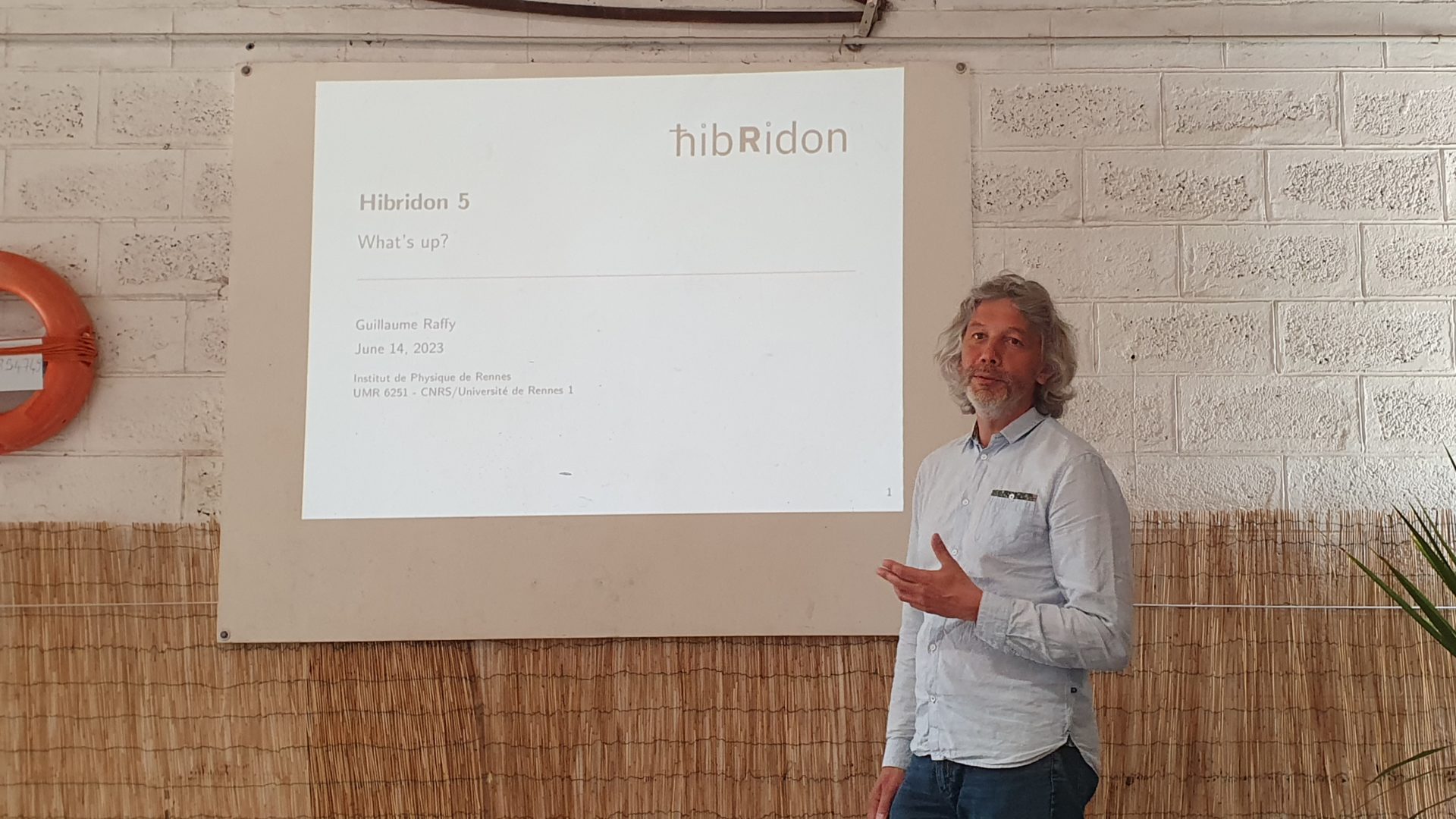
Collision-induced excitation of ammonia in hot interstellar environments - S. Demes, F. Lique, J. Loreau, A. Faure
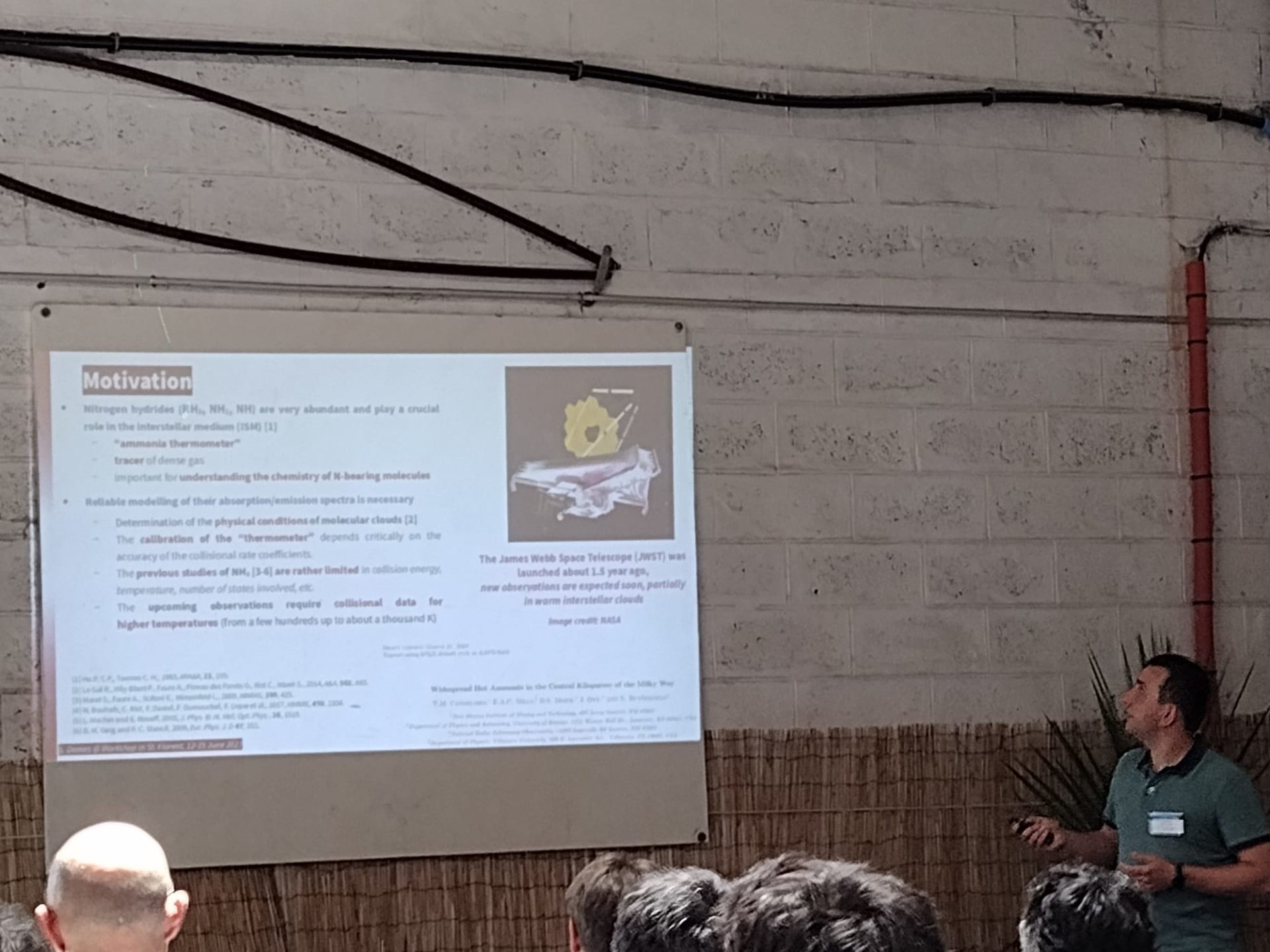
The exponentially increasing number of new astronomical observations have been showed that the interstellar molecular clouds exhibit a very rich and complex chemistry [1]. For proper interpretation of these radio-astronomical observations a non-LTE analysis of the emission spectra is required however. This requires the appropriate, state-to-state collisional rate coefficients for a broad range of temperatures, since collisions, in competition with radiation, are responsible for the molecular excitation in interstellar clouds.
We report our recent results in collision-induced excitation studies of ammonia (NH3) perturbed by H2. Ammonia is highly abundant in the interstellar medium (ISM), it has been detected in many interstellar and circumstellar environments [2,3].
State-to-state rotational de-excitation cross sections were computed using the exact close-coupling method [4]. The state-to-state and thermally averaged rate coefficients were calculated up to 500 K kinetic temperatures. A detailed analysis of the cross sections and rate coefficients was carried out, studying also the collisional propensity rules as well as the effects due to near-resonant rotational energy transfer between the molecular colliders, when higher rotational states of H2 can be excited [4].
References
[1] E. Herbst, E. van Dishoeck, Annu. Rev. Astron. Astrophys. 47 427-480 (2009).
[2] A.C. Cheung, D.M. Rank, C.H. Townes et al., Phys. Rev. Lett. 21, 1701 (1968).
[3] T. M. Candelaria, E.A.C. Mills et al. accepted in A&A (2023)
[4] S. Demes, F. Lique, J. Loreau, A. Faure, accepted in MNRAS (2023)
Sensitivity analysis, Simplicity and other Strategies for meeting observational need - M. Gueguen
In this talk, I analyze the different ways astrochemists can react to the overwhelming number of observations and molecule detections, whose interpretation require expensive and complicated theoretical and empirical data. I distinguish two ways of approaching the problem. Adopting a predictive approach consists on betting on future theoretical and experimental innovations, that will not only be available to make these calculations or experiments possible and will happen in parallel on both areas, so that the data accuracy produced by the former can be validated by the later. On the other hand, an exploratory perspective amounts to build tools that only to choose the systems that will be the most rewarding , i.e., whose impact will be the most decisive in advancing astrochemical models. Unlike predictions, exploratory tools focus on providing guidance and constraints, rather than an accuracy rivaling with that of observations. I present an interface based on RADEX that can be used as an exploratory tool to determine, case by case, whether more accurate collisional rate coefficients for a given system are likely to have a significant impact on astrophysical modeling and thus are likely to be worth the computational cost of these calculations.
